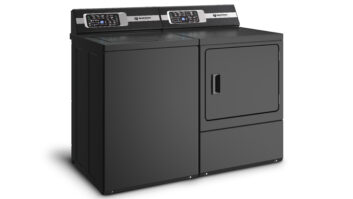Portable memory maker DataPlay officially closed its operation in mid-October after a failed last-minute attempt to secure additional financing.
DataPlay’s final days were a microcosm of the company’s four-year history. During this period the company took its investors, retailers and other partners on a rollercoaster ride that saw several major accomplishments interspersed with failures that culminated in the company filing for Chapter 11 protection on Oct. 18.
After an initially smooth period of development the past several years saw a series of technical and production problems start to slow the products progress toward retail. Perhaps the biggest irony for DataPlay, and its backers, is that portable audio players from Classic and iRiver and a limited number of pre-recorded titles from music publisher BMG had just become available at retailers like Circuit City and Best Buy.
But these introductions were too little too late.
As of press time, DataPlay executives had not returned repeated phone calls, and the company spokeswoman said she is no longer with the company and could give no information on DataPlay’s situation.
A spokesman for BMG said it would leave the few DataPlay titles on store shelves for the time being. DataPlay blank media partner Imation is taking a similar stance. While its executives did not wish to speak about DataPlay, a company spokesman said Imation is still intrigued by the technology and form factor and will continue to produce blank media as long as there is demand.
DataPlay was founded in the heyday of the dot-com boom, when venture capital was there for the asking. But a series of manufacturing delays and the drying up of financial resources finally doomed the company just as its products were starting to ship. DataPlay’s hardware and blank media concept was first unveiled by company CEO Steven Volk in 1998. The tiny optical drive was meant to read and write to the quarter-sized 500MB discs. Volk originally envisioned DataPlay as an under-$5 type of removable memory for digital cameras, handheld computers and portable music players. This back in the day, when a 4MB flash memory card could cost $50.
DataPlay’s first big splash came at the 2001 International CES. The technology had its own pavilion with about 20 corporations showing mockups of DataPlay-based products. Included were Toshiba, Samsung, Imation, Creative Labs, Kodak, Intel and Olympus. Although no specific launch plans were discussed, one of these companies — many of which had invested millions in DataPlay — was expected to launch a player that summer.
DataPlay went into a quiet period following that CES as it apparently was getting ready for its products to hit retail. But the initial launch period came and went without any word on what was causing the delay. In August the company announced that it was experiencing production delays and the first devices would not ship until early 2002. Volk took the blame for the delay, saying it had nothing to do with the hardware or media, but it was proving very difficult to construct the machines that would handle the manufacturing.
Apparently this new glitch scared off most of the top-tier firms that had expressed initial interest and were willing to invest money in the concept. Toshiba never again mentioned DataPlay, and Samsung took a wait-and-see approach. Only Imation, which intended to produce the blank media, continued ahead with its plan.
At Fall Comdex in 2001, Volk strongly reiterated that products would be on store shelves by the first quarter of 2002, and by the 2002 International CES it appeared as if DataPlay was back on track. At CES Evolution, a portable audio-player maker, showed a DataPlay device and revealed its plans to roll it out in several months. This news was followed in March by iRiver announcement that it too planned to ship a player that summer. Prices were expected to be in the $369 range.
The first quarter ended without any players or blank media being shipped, again with no explanation from DataPlay.
By April DataPlay began planning for the rollouts by inking several deals with music publishers BMG and Zomba and revealing a list of albums soon to be released on DataPlay.
As the summer approached Evolution placed its DataPlay plans on the back burner, but iRiver and newcomer Classic reported that they would ship players by the fall of 2002, yet again blowing past another promised ship date. Imation appeared to be the only firm on schedule showing a series of DataPlay discs and packaging and stating it could start production as soon as the hardware became available. About 50 music titles were expected at launch with a quick buildup each month leading into the holiday selling period.
Unfortunately, time, and more importantly money, was about to run out for DataPlay. In mid-August the company eliminated about half its 240-person work force as a cost-saving measure. On the bright side DataPlay hardware from iRiver and Classic began working its way into several large retailers, notably Circuit City and Best Buy, and Imation shipped the media. On Oct. 15 BMG released about a half dozen titles in support of the format.
But just as this was happening DataPlay’s financing ran out. On Oct. 9 it furloughed its remaining staff and the executives gathered themselves to try and secure one more round of funding. This fell through, and the company filed for Chapter 11 protection on Oct. 18.













